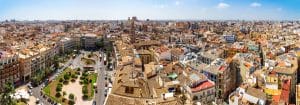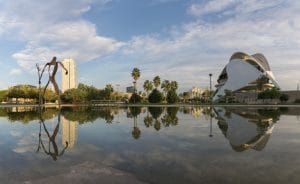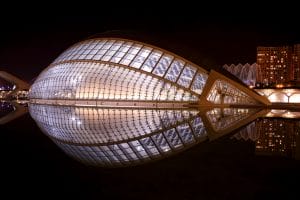Valencia is a harmony of the cultural and the cosmopolitan, of the historical and the high-tech, a brilliant balance of ancient and avant-garde. It’s a fantastic destination for a city break; the third-largest city in Spain takes a bit of buzz from Barcelona, some magic from Madrid and blends it with its own distinct identity, a melting pot of Moorish and Mediterranean influences and plenty more besides.

Shutterstock
It’s got an impressive CV (could that be curriculum valenciana?): one of the largest historic centres in the country with appropriately awe-inspiring architecture, a vibrant social scene, miles of green spaces and golden sands, great food, and great weather. If you’re short on time, most of the city’s sightseeing can be done within three main areas:





